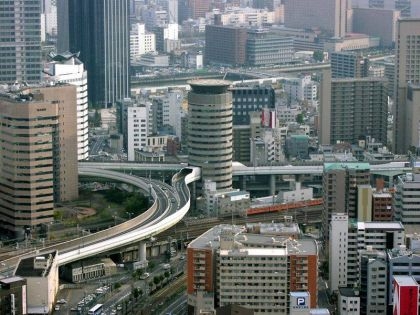
IE Singapore and JETRO keen on setting up third country collaboration in India
Global investors’ shift of interest to Asian developing nations and India’s position to become the third largest economy by 2050 prompted the team-up.
International Enterprise (IE) Singapore and Japan External Trade Organisation (JETRO) jointly organised their first seminar focusing on third country collaboration in India on Tuesday. The seminar saw turnout of more than 100 Japanese and Singapore companies. This reflects the keen interest of companies to form strategic alliances to enter India. Present at the seminar to share their experiences of venturing into India were Ascendas, YCH Logistics, JURONG International and Mapletree, according to an IE Singapore report.
Much attention has shifted from the developed economies US and Europe which have slowed down, to Asia and emerging economies like India which are seeing rapid growth. In 2009, India grew by 7.3 per cent despite the financial crisis and is expected to grow another 8.5 per cent this year. India is expected to become the world’s 3rd largest economy by 2050, after mainland China and the US. With a population exceeding a billion people, rising income levels, a growing middle class as well as rapid urbanisation, India is also emerging as one of the world’s most important consumer markets.
While the opportunities in India are immense, India presents its own set of challenges. India’s emphasis on a knowledge-based economy before industrialisation during its early days left it with a surging IT industry, but under-developed infrastructure. Therefore, IE Singapore and JETRO hope the capabilities of both Singapore and Japanese companies will align with the opportunities for collaboration in India.
Multiple reasons to work together
Present to give a keynote speech was Mr Chua Taik Him, Deputy Chief Executive Officer of IE Singapore. He encouraged partnerships between companies and explained the natural synergy between Japan and Singapore.
Said Mr Chua, “As the world becomes interconnected, it is more the norm than exception for companies to collaborate across boundaries in a synergistic manner to offer a better and more complete solution to the market. Furthermore, Japan and Singapore have a good track record of working closely with each other.”
Singapore and Japanese companies can complement each other in capabilities and reinforce each other’s capacity. Due to proximity and cultural affinity, Singapore entered India at an early stage of its development. Singapore companies have provided supporting services and products to the global manufacturers in India. Ascendas, whose flagship projects include the Singapore Science Park, International Tech Park Bangalore and Ascendas-Xinsu in Suzhou Industrial Park, has more than 10 years of experience in developing and managing industrial facilities in India. YCH Group, which provides third-party logistics services to manufacturers such as Dell, is currently present in 53 Indian cities. JURONG International currently has project presence across 18 cities in India and was recently appointed as master-planner for the Manesar-Bawal region of the Delhi-Mumbai Industrial Corridor (DMIC), marking its first step into industrial township planning in India.
The expertise of Singapore companies is congruent with the interest of Japanese companies to venture into India. Japan and India have recently stepped up economic and security cooperation in the hopes to contribute to India’s transport and infrastructure needs. Japanese Prime Minister Naoto Kan and his counterpart Manmohan Singh signed a series of agreements to increase trade and investment flow between the two countries. The agreement is expected to come into effect next year.
Their strengths in technology make Japanese companies viable partners for third country collaboration. Japan has been working with India on the Delhi-Mumbai Industrial Corridor (DMIC) valued at almost US$90 billion. In addition, Japanese companies have strong funding support from EXIM banks which improves the competitiveness of their operations.
Singapore’s Economic Relations with India
Singapore and India have close trade relations. Since India’s very first FTA, the Comprehensive Economic Cooperation Agreement (CECA) was signed with Singapore in 2005, bilateral trade has risen by about 30% to reach US$15.4 billion in 2009, making India Singapore’s 11th largest trading partner. The agreement covers trade in goods, trade in services, investment protection, and a review of the India-Singapore Avoidance of Double Taxation Agreement.
Singapore is also India’s second largest foreign investor, with cumulative investments of US$9.5 billion from April 2000 to December 2009.3 FDI inflow into India stood at US$2.38 billion and comprised 9 per cent of cumulative FDI inflows into India4. These investments are concentrated in industrial and commercial real estate, and transport and logistics sectors.
Apart from CECA, India and ASEAN also concluded the Trade in Goods Agreement under the ASEAN-India Free Trade Area in 2009. Under the ASEAN-India Free Trade Area, companies can accumulate the value-add to their products done in different ASEAN countries to fulfill AIFTA’s rules-of-origin criteria.
























 Advertise
Advertise






